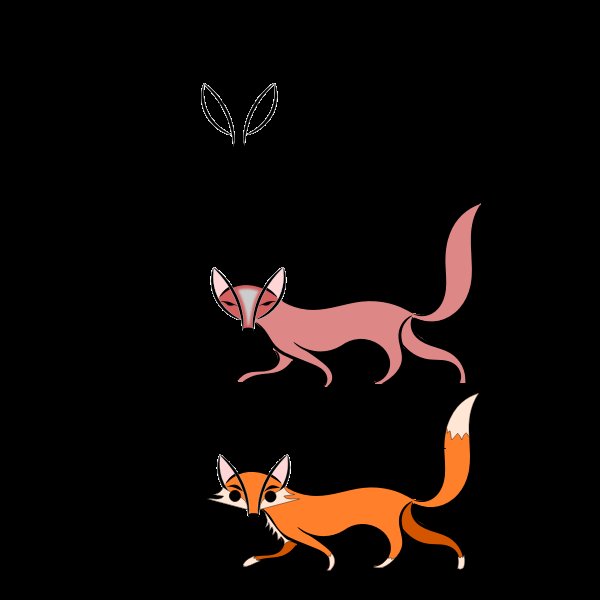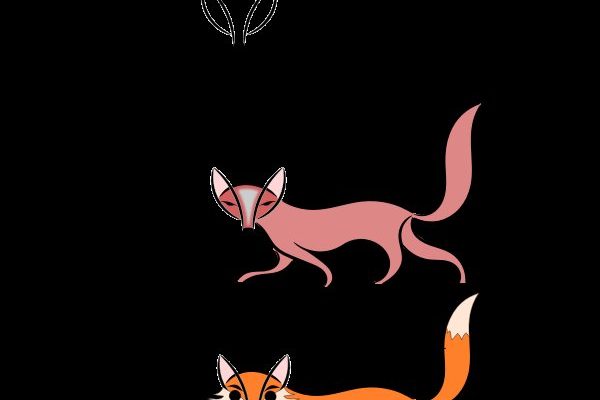
Understanding the evolutionary history of the fox is like peeling back layers of an onion. Each layer reveals something new—ancient ancestors who roamed the Earth millions of years ago, adaptations that helped them survive in different environments, and their eventual rise to become the clever animals we know today. Here’s the thing: our relationship with foxes goes beyond mere observation; it connects us to a broader story about survival, adaptation, and the impact of changing environments.
The Ancestral Roots of Foxes
To understand where foxes come from, we first need to travel back in time—way back to the Miocene epoch, about 20 million years ago. During this time, the first members of the dog family, known as Canidae, emerged. This family includes wolves, dogs, and, of course, foxes. The earliest fox-like creatures were quite different from modern foxes; they were larger and likely had different habits.
You might be wondering how these ancient creatures evolved into the foxes we recognize today. Well, as environmental changes occurred, certain traits became more advantageous for survival. The ability to hunt efficiently and adapt to various habitats started shaping the lineage. Over millions of years, different species branched out, leading to the distinct fox species we have now, such as the red fox and the arctic fox.
Recognizing these ancestral roots helps us appreciate the genetic diversity of foxes. From their shared lineage with wolves to their unique adaptations, modern foxes are a fascinating blend of survival strategies that have evolved over time.
The Rise of the Modern Fox
Fast forward to about 7 million years ago, and we see the emergence of Vulpes, the genus that includes today’s foxes. Among them, the red fox (Vulpes vulpes) is the most common and widespread species. These clever critters adapted to various environments, thriving in forests, grasslands, and even urban areas. This widespread adaptability is a testament to their cleverness and resilience.
The red fox’s success can be traced back to its wide-ranging diet, which includes small mammals, birds, fruits, and insects. This omnivorous diet has allowed foxes to flourish in diverse habitats and circumstances. Think of them as the ultimate survivors, capable of finding food and shelter wherever they go.
Interestingly, the red fox is also known for its playful and curious nature. Have you ever watched a fox pounce on its prey? It showcases not only their physical agility but also their intelligence and strategic hunting skills. These traits have made them an enduring symbol of cunning in various cultures.
Foxes in Cultural History
Throughout history, foxes have captured human imagination and found their way into folklore and myths. In many cultures, they symbolize cleverness and adaptability. For instance, in Japanese folklore, the fox, or *kitsune*, is often portrayed as a magical creature with the ability to shape-shift, highlighting its intelligence and mystique.
In Western literature, foxes are frequently depicted as tricky and sly, like in Aesop’s fables. This portrayal reflects our fascination—and sometimes wariness—of their cunning nature. Foxes often represent the clever underdog, using their wits to navigate challenges.
This cultural significance also sheds light on our relationship with wildlife. By understanding their evolution and behaviors, we come to appreciate foxes not just as animals, but as part of our shared narrative on this planet. Plus, it invites us to consider how our actions impact their habitats and survival.
Adaptations: How Foxes Thrive
Foxes are masters of adaptation. Their physical and behavioral traits are tailored perfectly for survival in various environments. For instance, the arctic fox has developed a thick coat to insulate against freezing temperatures, while the fennec fox has large ears that help dissipate heat in the Sahara’s hot climate.
One of the most notable adaptations is their ability to hunt. Foxes use their keen senses—especially their hearing—to locate prey. They can detect the slightest rustle of a mouse under the snow, allowing them to pounce with pinpoint precision. This hunting strategy is not just about skill but also about being in the right environment and using natural resources effectively.
Moreover, their social structure varies by species. While some foxes, like the red fox, are generally solitary, others may form small family groups. This flexibility in social behavior also contributes to their survival. It’s a perfect example of how evolution shapes not just physical traits, but behaviors that enhance adaptability.
Modern Conservation Challenges
Despite their impressive evolutionary history, foxes face numerous challenges today. Habitat loss due to urbanization, hunting, and climate change threaten their populations. With more people moving into areas that were once wild, foxes are losing their homes and food sources.
Additionally, as natural predators decline, foxes may struggle to maintain their ecological balance. They play an essential role in their ecosystems by controlling rodent populations, but when they’re pushed out, the ripple effects can be significant.
It’s crucial for us to recognize these challenges. Supporting conservation efforts and advocating for sustainable practices can help ensure that future generations get to enjoy the cunning beauty of foxes. Remember, when we protect their habitats, we also protect a piece of our shared natural heritage.
Monitoring Fox Populations
Conservationists are actively working to monitor and protect fox populations around the globe. By studying their behavior, habitats, and population dynamics, researchers can identify effective strategies to safeguard these remarkable animals.
In many areas, wildlife tracking programs use various techniques—from GPS collars to camera traps—to gather data. This information helps scientists understand how foxes interact with their environments. It also sheds light on their health and population trends, which are crucial for making informed decisions about conservation efforts.
Public engagement plays a huge role as well. Community-led initiatives, such as habitat restoration or educational programs, can foster a deeper appreciation for foxes and their ecosystems. When people understand the importance of these animals, they’re more likely to support conservation efforts.
The Future of Foxes
Looking ahead, the future of foxes depends on a collective effort to protect their habitats and address the challenges they face. Climate change will continue to affect their ranges and food availability, meaning foxes may need to adapt once more.
As we learn more about these fascinating creatures, we can find ways to coexist with them harmoniously. Whether it’s sharing urban spaces or protecting natural habitats, every small action counts.
As you reflect on the evolutionary history of the fox, consider how their story intertwines with our own. Understanding their past enriches our connection to nature and highlights the responsibility we have to protect the wild spaces they call home.
Foxes may be cunning and adaptable, but they need our help to continue their journey. So, the next time you spot a fox, remember its incredible evolutionary story—and the role we play in ensuring it continues.

